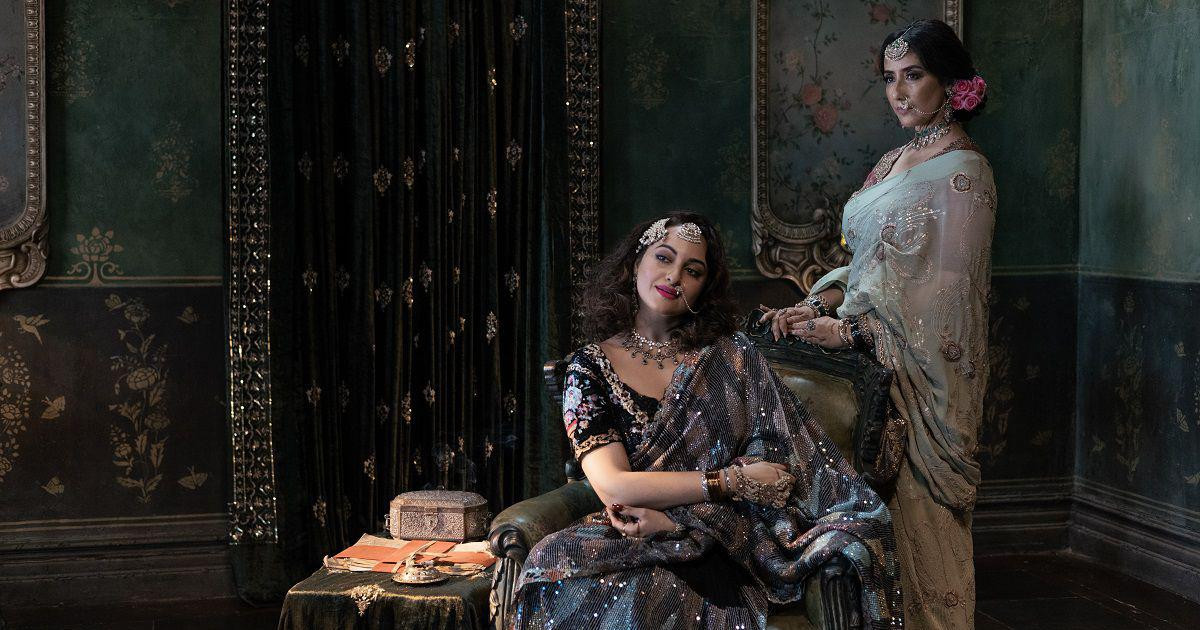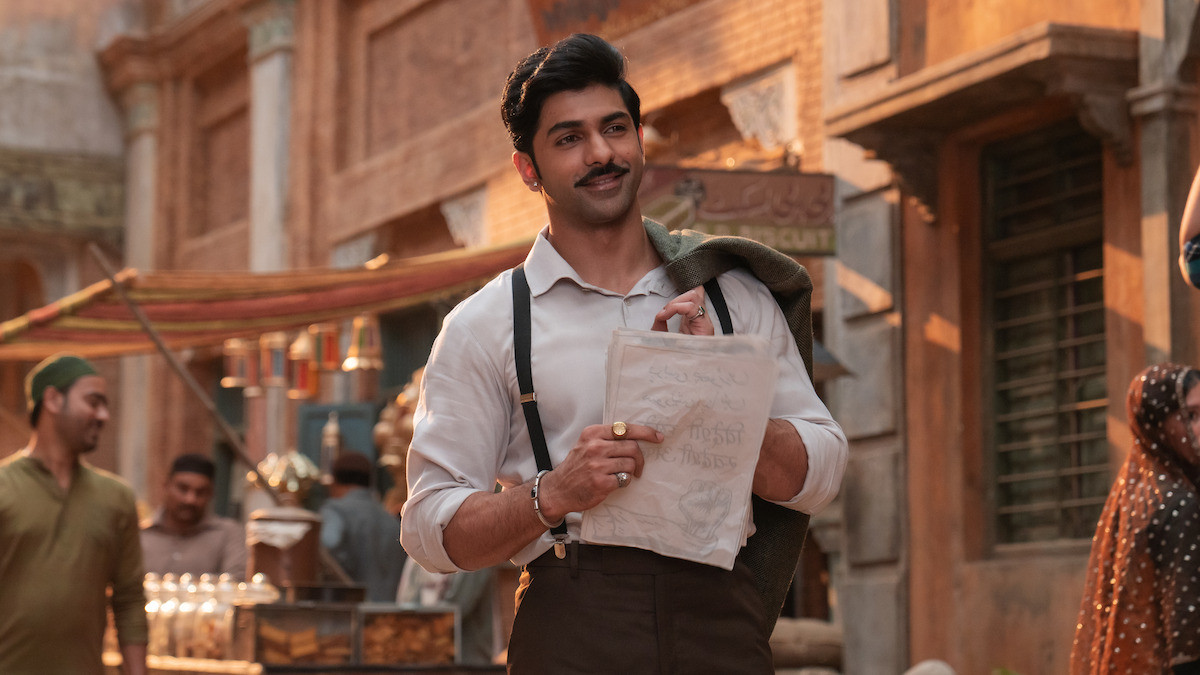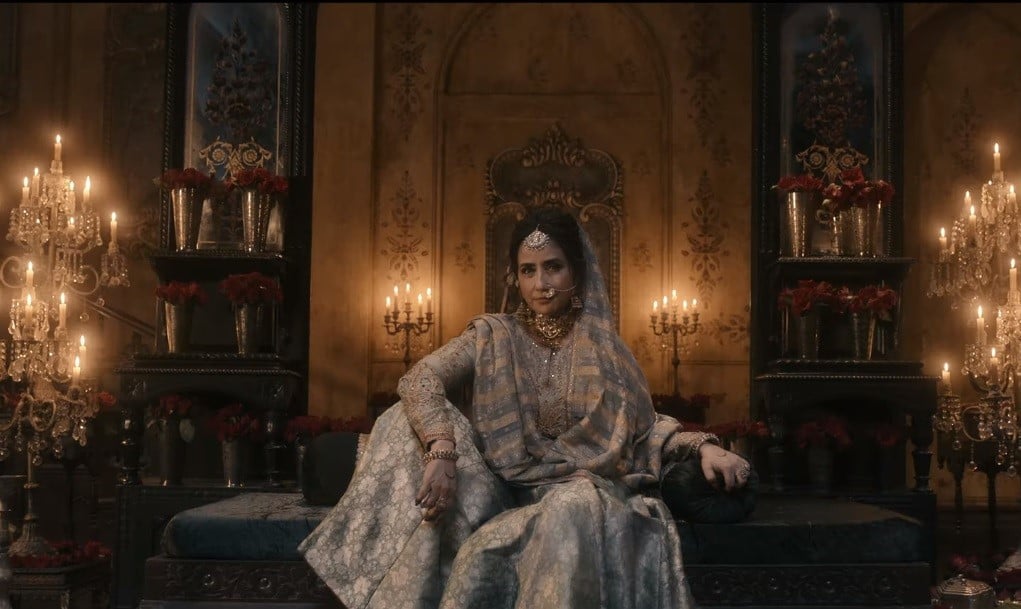KARACHI:
Watching Heeramandi: The Diamond Bazaar is a perplexing ordeal. One has to come to terms with the fact that there is a great deal of context attached to the Netflix series. Firstly, it borrows from the lives of courtesans in pre-partition Lahore. Secondly, it is meant to be ace storyteller Sanjay Leela Bhansali’s magnum opus. Somewhere between marrying these two vastly different worlds, the narrative loses its way.
Don’t get me wrong – the visuals are stunning. When it comes to cinematography and the overall look and feel of the series, it is, perhaps, one of Bhansali’s best offerings. It is thus extremely hard to reconcile this with the fact that plot-wise, in terms of character choices, and even in respecting the source material, Heeramandi loses its shine.
Much ado about nothing
Heeramandi is a visual feast. Each frame is like a magnificent painting – picturesque, immersive, and large-than-life. Bhansali’s Heeramandi is lavish – a court of its own where the courtesans are both the entertainers and the possessors of great power. The characters are stunning to look at, complete with ornate jewels and envy-invoking fabrics.
This, however, gets old. No amount of gold-laden characters can make up for the fact that in terms of writing, the story is weak and far too forgiving of its own transgressions. When one begins watching Heeramandi, they are promised an unflinching tale of rivalry and revenge, interspersed by the possible union of star-crossed lovers, all set against a backdrop of nations on the precipice of independence. All these elements seem to lose their initially cemented value, with the story painfully manoeuvring itself to a thoroughly disappointing end.
The rivalry

Bhansali begins by setting the stage for the imminent rivalry between Mallikajaan (Manisha Koirala) and Fareedan (Sonakshi Sinha). Fareedan returns to avenge her mother’s murder, and thus begins a fiery back and forth of taunts and schemes between the two leads. As far as Mallikajaan and Fareedan go, the initial dialogues penned to highlight their rivalry are absolutely brilliant.
Manisha is an intimidating Mallikajaan. She effortlessly embodies all the flawed traits of the character, making the audience hate Mallikajaan and yet, somehow, root for her too. The flawed, complex persona is tackled head-on by the actor, and her performance is only elevated by her co-star’s presence.
Indeed, Sonakshi delivers and how. She is foreboding as Fareedan, a harbinger of doom who is on a delectable path of destruction. She holds her own in every frame, is mesmerizing to look at, and her commanding presence enticingly sees eye-to-eye with Manisha’s performance. It is this rivalry that is one of the stand-out elements of the show and, eventually, one of the greatest let-downs, as Heeramandi meanders to its conclusion.
The characters

Another praise-worthy performance is that of Aditi Rao Hydari. As Bibbojaan, Aditi’s courtesan harbouring a secret has one transfixed at all moments. She is gorgeous to look at, and her soft, sweet demeanour as a courtesan is a pleasant watch, far too reminiscent of Deepika Padukone at times. Her dance numbers are graceful, and she is a picturesque addition to the cast that delivers in terms of performance.
It is thus that one finds themselves craving moments where Bibbojaan, Mallikajaan, or Fareedan are on-screen. The rest of the characters are quite lacklustre, with television’s Sanjeeda Shaikh giving a performance fit for the small screen. There’s nothing wrong with her essaying the wronged Waheeda per se, but she seems to exert herself more than the others and it shows in a way that disrupts one’s suspension of disbelief.
Richa Chadha’s Lajjo is forgettable, which is a shame, given Richa’s prowess as an actor. Lajjo’s arc does nothing to further the plot and the existence of the character is forgotten by the time the series ends. Her demise serves as a way to celebrate the freedom granted to courtesans through the release of death, and the entire scene, meant to be emotional, comes across as absurd and forced.
The romance

Perhaps the most bewildering choice is Sharmin Segal as Alamzeb. A lot hinges on Mallikajaan’s daughter – she is the heir to the Shahi Mahal and the future huzoor, but her heart lies elsewhere. A poetry aficionado with rebellion in her heart, Alamzeb is one of the key elements of the series, given that it is her romance with Tajdar (Taha Shah Badussha) that creates friction between the two worlds – one, to which she belongs and hopes to escape from and the other, where her acceptance as a resident of Heeramandi is an uphill battle.
However, Sharmin’s stone-faced, expressionless Alam does little to savour the poorly written character and one finds themselves wondering what Bhansali was thinking when casting Sharmin. It doesn’t help either of the two, of course, when one discovers that she is Bhansali’s niece.
In a similar vein, Tajdar, though played to perfection by Taha, is a forgettable hero. In fact, the entire romance between Tajdar and Alam is so flimsily crafted and executed that one wonders if it is the brainchild of the same Bhansali who previously breathed life into epic romances like Hum Dil De Chuke Sanam, Devdas, Goliyon Ki Raasleela Ram-Leela, and Bajirao Mastani.
The politics

Taking on a project like Heeramandi and fictionalising it was never going to be an easy task. While Bhansali tries and manages to churn out a mediocre project at best, it is history itself that takes the harshest beating. As mentioned before, Heeramandi does little to respect its source material, and the lines between power and consent blur in an almost disrespectful way. One understands that the power courtesans wield over nawabs is due to them utilising their bodies to exert control and this is often played up in the series. However, at many points, Bhansali himself seems to be confused about the role consent will play for his characters.
At times, all the Heeramandi courtesans are proud to be what they are. At other times, they mourn a freedom that was never theirs to begin with. There is a great deal of power and wealth in Shahi Mahal – enough to ensure that those who do not wish to be courtesans can be allowed to leave. This is an option that does not exist. An unnecessarily pronounced sexual assault scene also comes out of nowhere, throwing a complete spanner in the works and derailing the progression of events in a damaging way.
What is even more puzzling is how Heeramandi finds itself roped into the struggle for independence. The way this is executed seems preachy and the thread of the plot has truly unravelled by this point to snowball into an exhausting, eye-roll-worthy scene where courtesans unite to show a fortified front against the British. The set-up is exceedingly feeble and thus, the climax and conclusion heavily suffer.
All in all, is Heeramandi: The Diamond Bazaar a show in which you should invest your time? If it’s mindboggling imagery that you seek, you might find yourself satiated. However, if you tune in in hopes of a nuanced narrative that pays due respect to what it sets out to fictionalise, perhaps Heeramandi is not for you.
Have something to add? Share it in the comments


